Shan Blume is a true media artist – his green laser-space at the Olympus exhibition in Berlin's Opernwerkstätten was an experience with performative qualities. Shan, who is one of the few 'real' Berliners, has his studio in his spacious Berlin-Neukölln flat. It's really cosy: Lots of books, art works from friends, as well as his own small sculptures, prototypes, and some older two-dimensional prints cover the walls and the shelves. But Shan de-materialised most of his work a while ago. Each art piece is site-specific and has ephemeral characteristics: laser beams and holography are amongst his favourite tools. He creates hallucinatory spaces and tricks the audiences' perception. While eating delicious self-made Pesto-Pizza and drinking white wine, we talked about Shan's early experimental works, about his upcoming country life, the virtualisation of the future and, of course, about philosophical media-art. Read the interview...

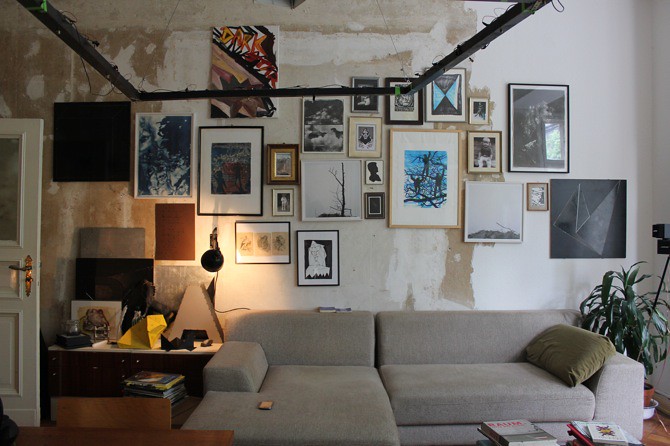
all studio photos by artfridge / courtesy Shan Blume



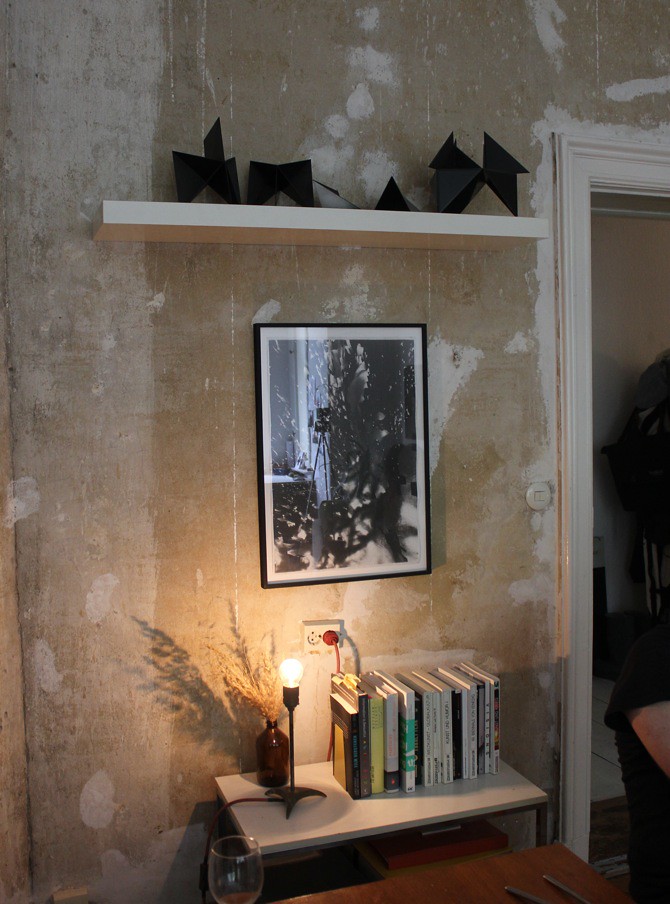
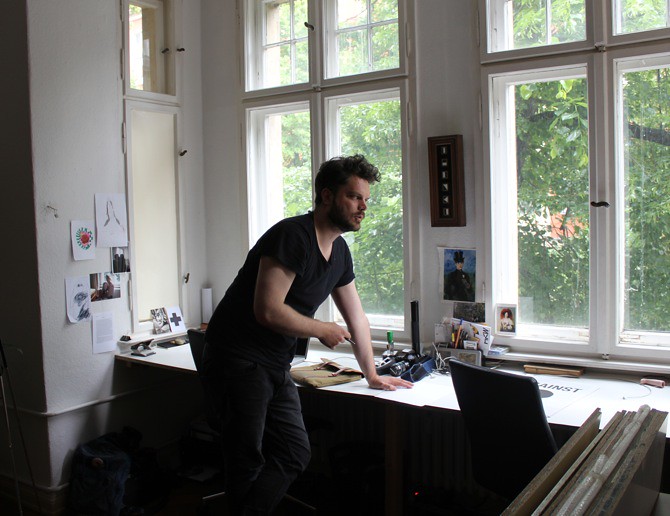
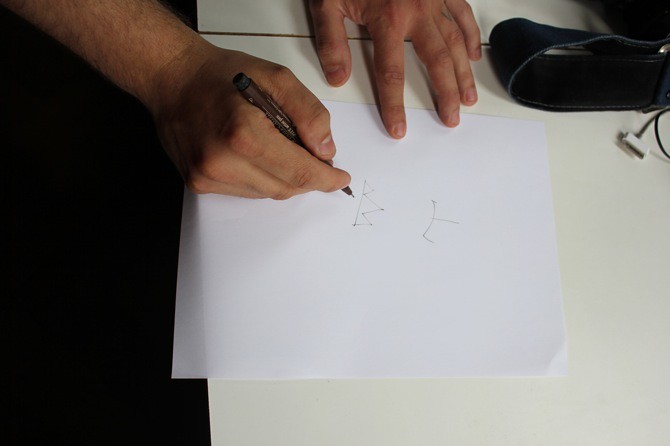
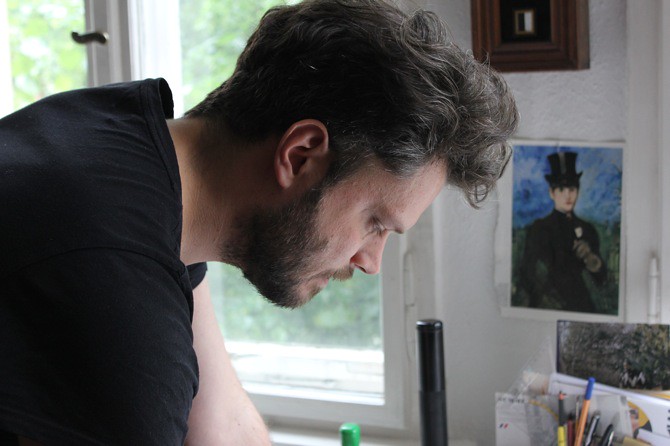
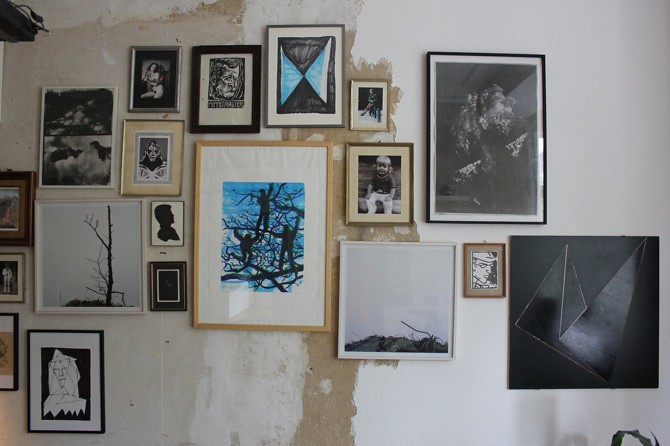

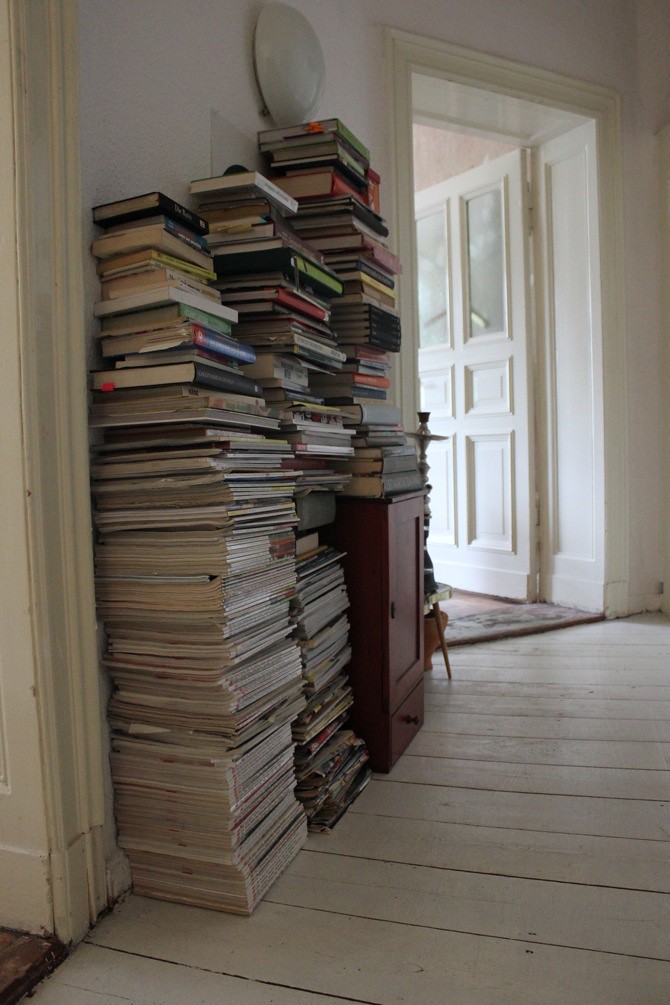
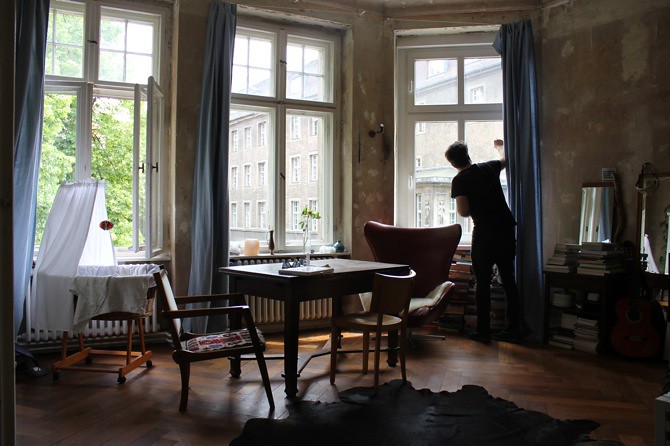
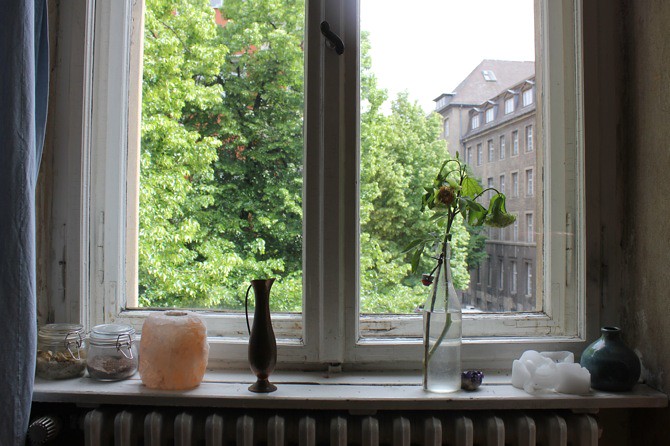
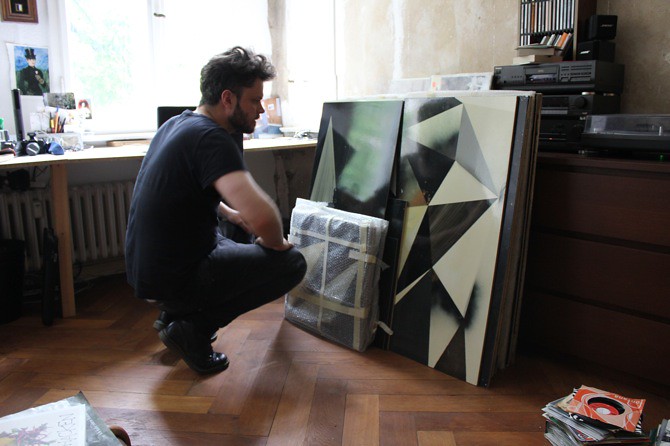
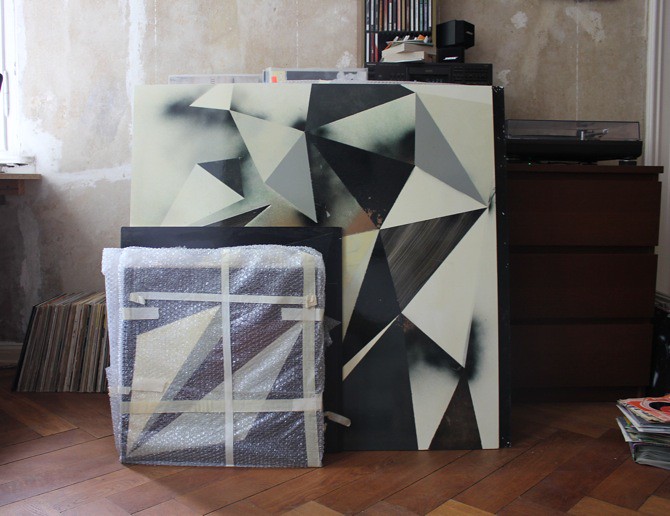
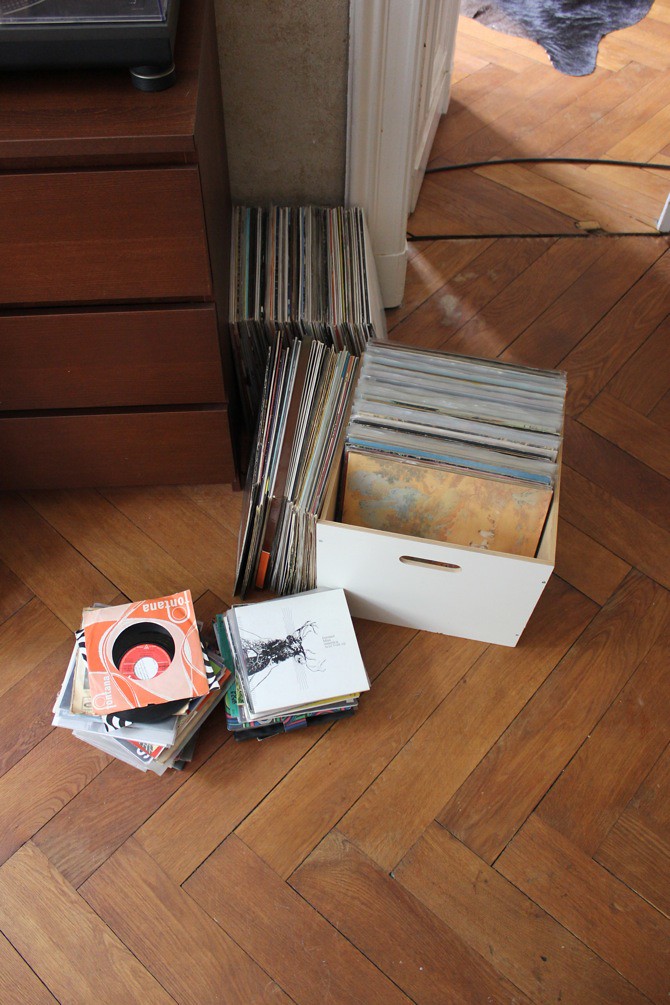
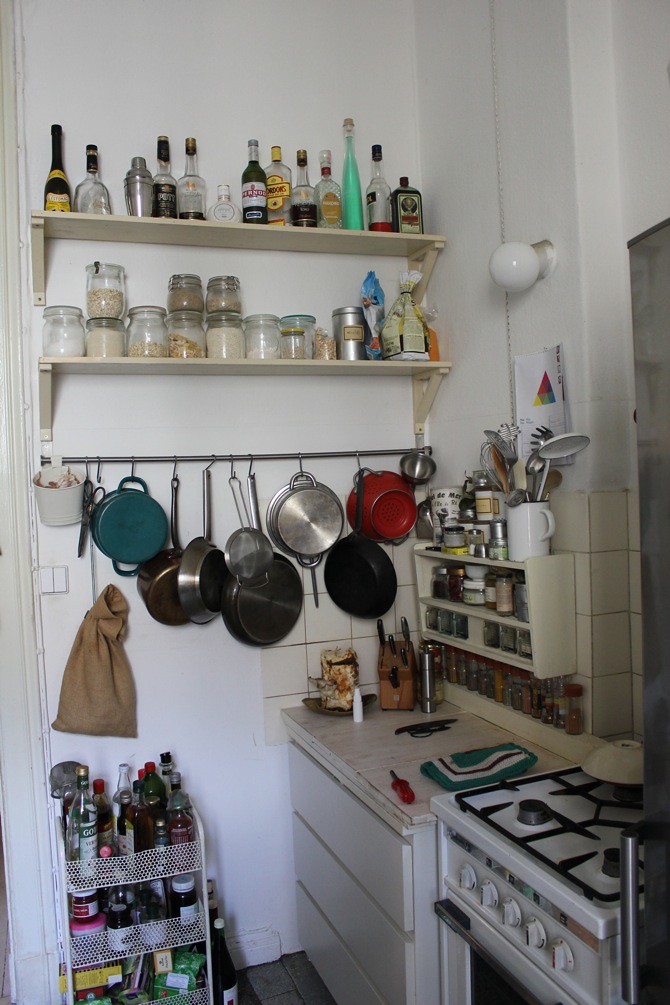

all studio photos by artfridge / courtesy Shan Blume
Anna-Lena Werner: Shan, you grew up in Berlin Spandau and studied at the Kunsthochschule für Medien in Cologne. Why did you choose to study at a media art school?
Shan Blume: I first studied two years at Universität der Künste in Berlin with Lothar Baumgarten, which was cool. But when I started working with new media the UDK was not at all equipped: They had three Macintoshs of the oldest generation and called it ‘multimedia-lab’. Previously the KHM had also accepted my application, so in 2004 I went to Cologne and asked them to revive my enrolment – feeling quite remorseful. I spend four years there.
Anna: Back then you founded an off-space together with the media artists Timothy Shearer, Benjamin Tillig and Florian Kuhlmann...
Shan: ...we called ourselves ‘media defect’ and worked as a kind of media-guerrilla group with many absurd concepts. We did exhibitions that were, for example, only accessible via blue tooth. We challenged questions of ownership and copyrights in art.
Anna: What was the first thing you did when you came back to Berlin?
Shan: I took a little time-off, since I became a father. My work needed to become more simple, because I had no money, no material, no technical equipment – it took me a while to get used to the reality of Berlin again. But that was ok, a healthy cut. And I started to do video stage design...
Anna: ...video stage design? What exactly is that?
Shan: The first was an opera where one part of the stage was physical and the other part was digital. It can either be beamed onto the physical stage or the whole stage could be digital, like a backdrop. I still do video stage design parallel to my art and mostly work with one director. We just did a piece in Beijing, where we transformed a classical Peking opera into a modern act. As a video artist, I think it’s my job to join the tradition with a new aesthetic. I feel comfortable with this task, because it’s exciting that my work becomes interactive – that there is human factor.
Anna: What is art for you?
Shan: For me, art is like a crystal. It has endlessly many facets. Within this crystal there is good and bad art, radical and soft, a small sketch and an extreme performance. And that’s good. Art asks how healthy a society is. My art is rather philosophical than political. Even though I would like it to be political.
Anna: How did your interest in digital media art evolve?
Shan: I think it emerged from my interest in digital photography and cartoons. And then the click came instantly, once I understood the opportunities given by the internet. A whole new philosophical area evolved and it was also a time when movies like ‘Matrix’ increased the interest in technology. When I was still at the UDK in Berlin, I worked with a compression method on jpgs and cartoon sequences. Another early work was a guerrilla project with slides, that I would project onto public walls in Berlin during the night. These early projects were rather driven by impulse than by thought.
Anna: An experimental time?
Shan: Yes. But then I suddenly discovered artists like Jenny Holzer – and I realised “this has already been done before.” But obviously I am sensitised for media that I am using myself. For example, I have recognised that laser art has a huge revival.
Anna: Why is laser such an interesting material for you?
Shan: Laser is a multifunctional material. It is a beam with colour that I can expand and reflect or I can use it to cut, engrave and etch. One has to experience it live in the particular exhibition space, since all my laser works are site-specific. For the Olympus show at Opernwerkstätten I worked with a diode that collects only one dot, which is reflected by a mirror moving 360 degrees. By this, the dot is projected 30.000 times per second. The eyes cannot follow this process– they see the structure as a solid shape, but basically it’s only point moving extremely fast.
Anna: You also use holography – another hallucinatory media. How does it work?
Shan: Holography means that the laser is expanded, exposing and engraving an object on a plate. The aesthetic is limited, but I am quite interested in its philosophy: if I would destroy the plate, each fragment would still hold the access to the complete information. This could be exciting for future issues concerning digital data storage.
Anna: Your laser works are concerned with the creation of illusionary, geometric spaces. This illusion often gives them an ephemeral characteristic. If somebody would switch the light on, the work would disappear...
Shan: True. It’s very fragile and it changes with the amount of people entering my work. Though I am happy about that, because it keeps the work alive and playful. I get a response from the visitors. The virtualization is an important part of my work, since I am trying to avoid materiality.
Anna: The media artist Zbigniew Rybczyński once told me in an interview that everyone who cannot do computer programming is an illiterate to him. Would you agree?
Shan: The media theorist Marshall McLuhan already gave answers to all these questions. He says that every medium is an extension of the human: The wheel is an extension of the foot, the computer is an extension of the brain. So, we have to adopt with the new medium and programming would be a part of that. It might be radical, but it’s true.
Anna: You also create sculptural geometric works. How do you develop the form and shape of these objects?
Shan: I am not really choosing the shape myself – it is a digital process that I developed. I form a chunk of clay in my hands and then place it in a 3D scan. By that, I get a cloud of dots – a virtual volume. Then it looks like this yellow sculpture, which is an intermediate step. This is made out of circa 50.000 triangles. If I drill it down to the almost smallest amount, then the polygon becomes apparent. This reduction or simplification is then cut by a laser into steel. In the end I just have to put the fragments together. It’s quite an industrial process – I can only influence the chunk of clay.
Anna: Is this the only haptic element left in your work?
Shan: In some cases I intentionally decide to work two dimensional, for example with prints of 3D scans. The link to past forms of handcraft are important to me. I developed a series of works that combine high-end 3D-scan technologies with Cyanotype, a 150-year old photography process. The reproduction is then made by hand. So, there is also an approach to the unique work.
Anna: Who influences you?
Shan: The most complicated influence for me is Guy Debord, meaning the art critic by the Situationist International. They basically concluded art. Once I was aware of that, I found it very difficult to produce art. Seen from that perspective, my ephemeral and more playful works make me most happy.
Anna: Do you always work at home?
Shan: Right now I do – this room is my studio. But I am currently transferring my studio to Landhof Müncheberg, an old farm in the Märkische Schweiz in Brandenburg. We will be a commune of ten or more people working a miniature village. If it works out, the vision is to create a laboratory for working and living. Too small for the keeping of animals, but big enough to create a festival. Then it suddenly becomes political.
Artist Website: shan-blume.de


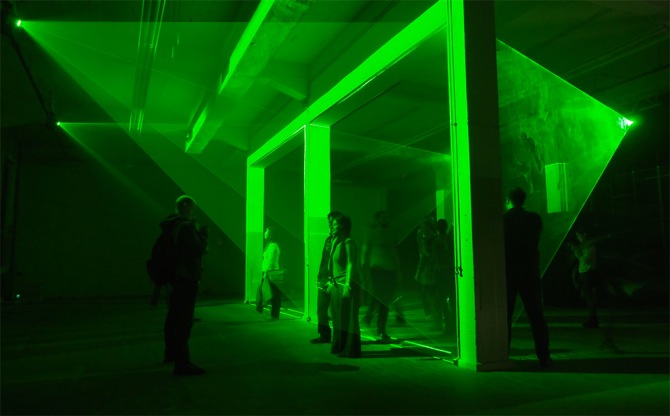
photos of Laser installation "Tunnel" and "OT_L_SPACE 01" courtesy Shan Blume
